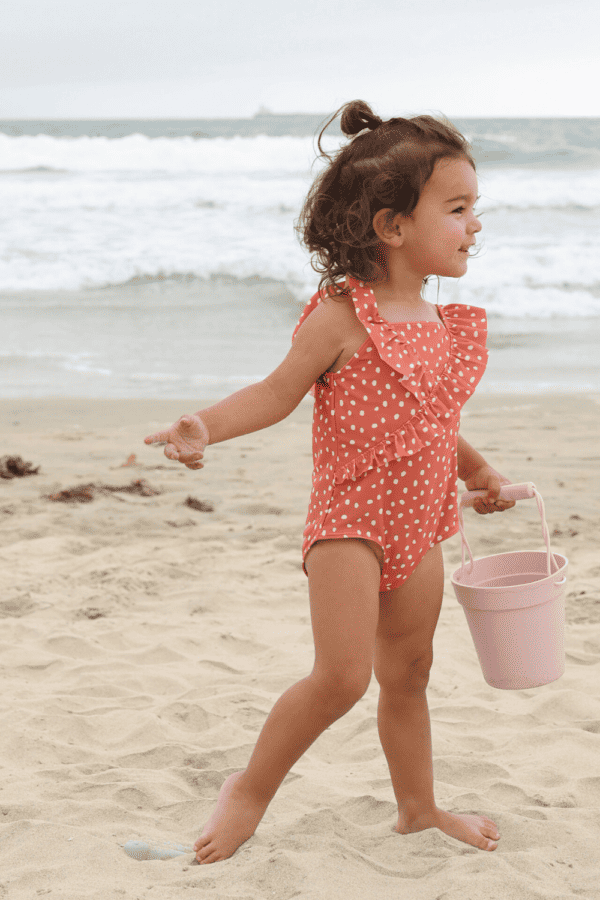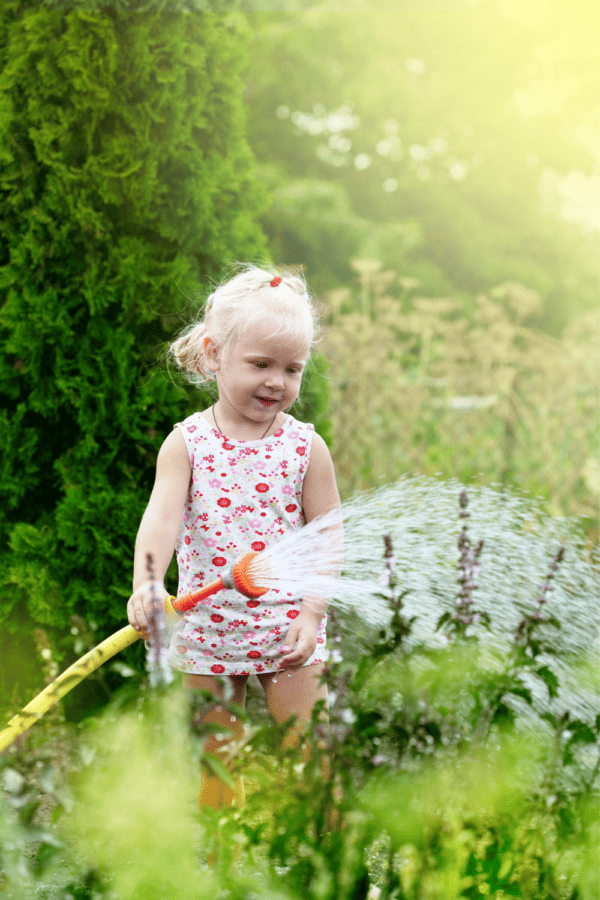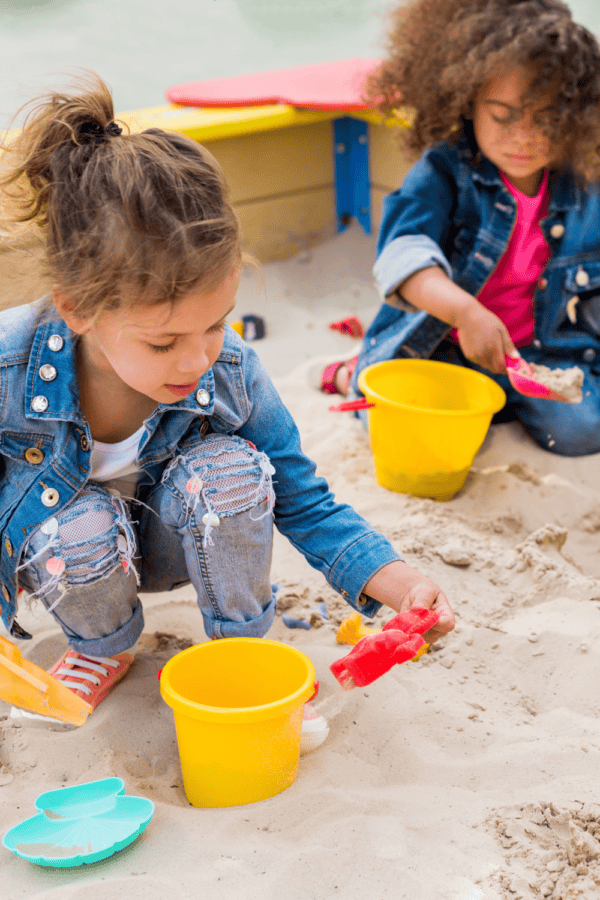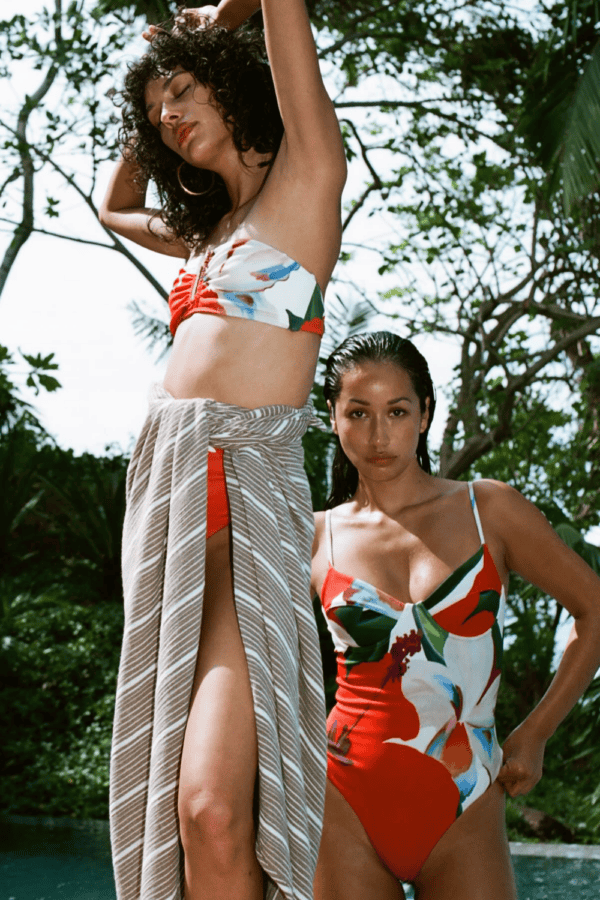Unfortunately, finding a 100% non-toxic kiddie pool is a bit of a challenge, considering that most are made from toxic PVC plastic.
But the good news is that there are some safer options available on the market today. I’ve done the research for you so that you can enjoy your outdoor spaces with your kiddos during the long, hot days of summer.
In a Nutshell:
- The majority of kiddie pools on the market are made with PVC, which is the most toxic type of plastic
- Plastic-free kiddie pools don’t exist (yet), so you’ll want to look for safer types of plastic, such as HDPE or TPU.
- If you must go with a PVC-based wading pool, at least look for PVC that is phthalate-free.
- To help you shop, I’ve listed the best brands for low-tox kiddie pools that I could possibly find below!
What's Included In This Guide:
- Choosing the “Best” (If Not Perfect) Option for Your Low-Tox Kiddie Pool
- ✔️ Key Tip
- Best Non-Toxic Kiddie Pools & Wading Pools
- 1. Step 2 Play & Shade Pool
- 2. Funsicle Round Kiddie Pool (most affordable)
- 3. EverEarth Beach Blanket and Kiddie Pool (best PVC-free inflatable kiddie pool)
- 4. Costzon Inflatable Water Slide (PVC-free)
- A Few More “Okay” Options for Kiddie Pools
- Are Inflatable PVC Pools Toxic? (hard plastic vs inflatable pools)
- Which Plastic Resin Codes Are Considered Safer For Kiddie Pools?
- PVC Plastic Kiddie Pools Aren’t Eco-Friendly Either…
- Tips To Enjoy Your Safe, Non-Toxic Kiddie Pools This Summer
This guide contains affiliate links, which means we may earn a commission if you decide to make a purchase. As always, we only make recommendations that are genuine. Featured Image Credit: Pool Buoy.
Choosing the “Best” (If Not Perfect) Option for Your Low-Tox Kiddie Pool
The main type of plastic you will want to be aware of when shopping for the least toxic kiddie pool is polyvinyl chloride, or PVC.
This is by far the most common type of material used for kiddie pools and, unfortunately, it’s also a toxic one.
Scientists have been highly critical of PVC for years due to the fact that its chemical components can be carcinogenic and endocrine disruptive, and can include phthalates, cadmium, lead, as well as other things that are potentially harmful to your child’s health.
That said, all kiddie pools are made out of some kind of plastic. So, there is not really a 100% perfect answer here. Plastic-free kiddie pools don’t exist (sorry), and there aren’t very many that are PVC-free.
This can potentially make shopping for kiddie pools a frustrating challenge… But when there are no perfect choices, I encourage you to just remember to focus on what you can control and make the best decision possible.
✔️ Key Tip
Instead of PVC, look for safer plastics such as HDPE or TPU. But if a PVC-based kiddie pool is your best option, at least look for “phthalate-free” PVC, which can be considered a safer option.
Remember that stress can also be toxic! Try not to let baby pool shopping keep you from enjoying fun in the sun with your loved ones this year.
For more info on what to look for in safer wading pools, see the bottom of this guide. Or if you’d like to get straight to it, let’s take a look at some of the best options for kiddie pools pools (for kids, dogs, and adults!) so you can enjoy the warm summer sun.
Best Non-Toxic Kiddie Pools & Wading Pools
1. Step 2 Play & Shade Pool
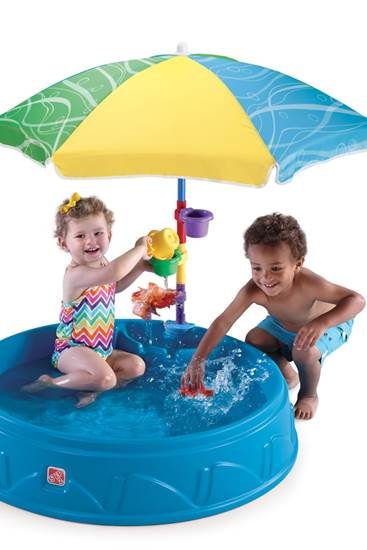
Dimensions: 37.5” H by 37.5” W by 7.5” deep
Weight: 13 lbs.
Features: Two molded seats, a 40-inch umbrella, three funnel cups, and a water spinner water toy included
Material: HDPE
This hard plastic pool is a classic and is loved by parents— especially thanks to the shade-providing umbrella. This can be a great option for yards with full sun, as it can help protect your little one’s delicate skin.
The pool holds 12 gallons of pool water for splash-time fun, and in the colder months, it can be used as a sandbox, holding up to 165 pounds of sand. (I’ve got you covered for non-toxic sand options!)
Instead of PVC, it’s made from HDPE, which is considered a “safer” plastic and is both durable and affordable.
2. Funsicle Round Kiddie Pool (most affordable)
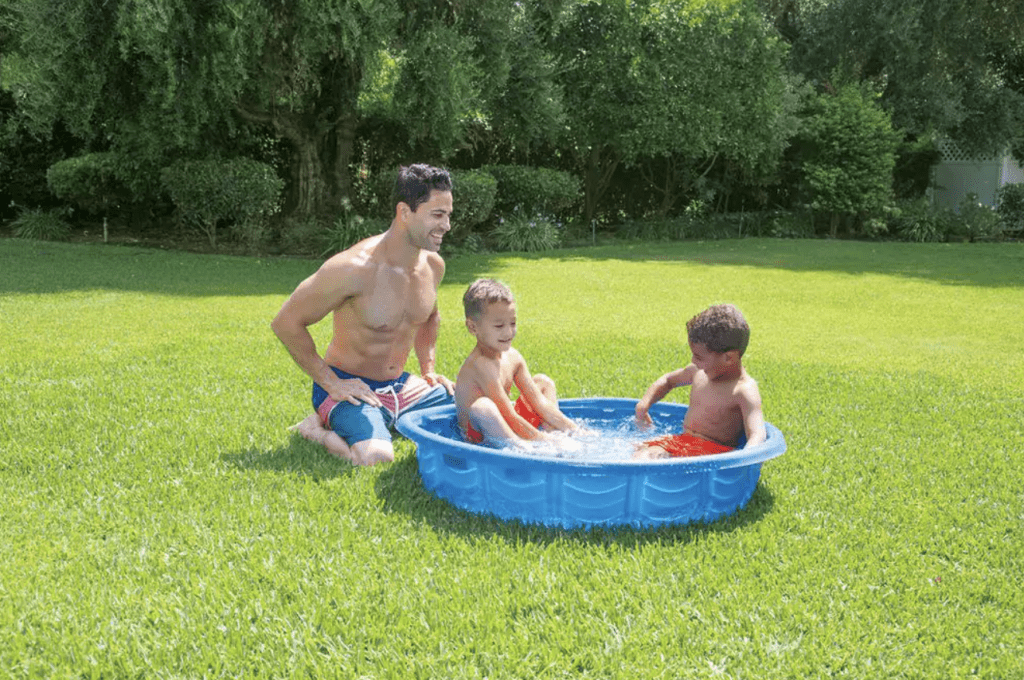
Dimensions: 7.9″ H x 45″ W
Features: No setup required. Affordable price point at less than $10.
Material: HDPE
This hard plastic wading pool is also made out of HDPE.
It can double as a sandbox or pet splashing pool when the kids aren’t swimming in it. It doesn’t require any setup and is easy to clean. If you want to get multiple, they’re stackable for easier storage.
Plus, coming in at less than $10, it’s one of the most affordable options on this list.
3. EverEarth Beach Blanket and Kiddie Pool (best PVC-free inflatable kiddie pool)
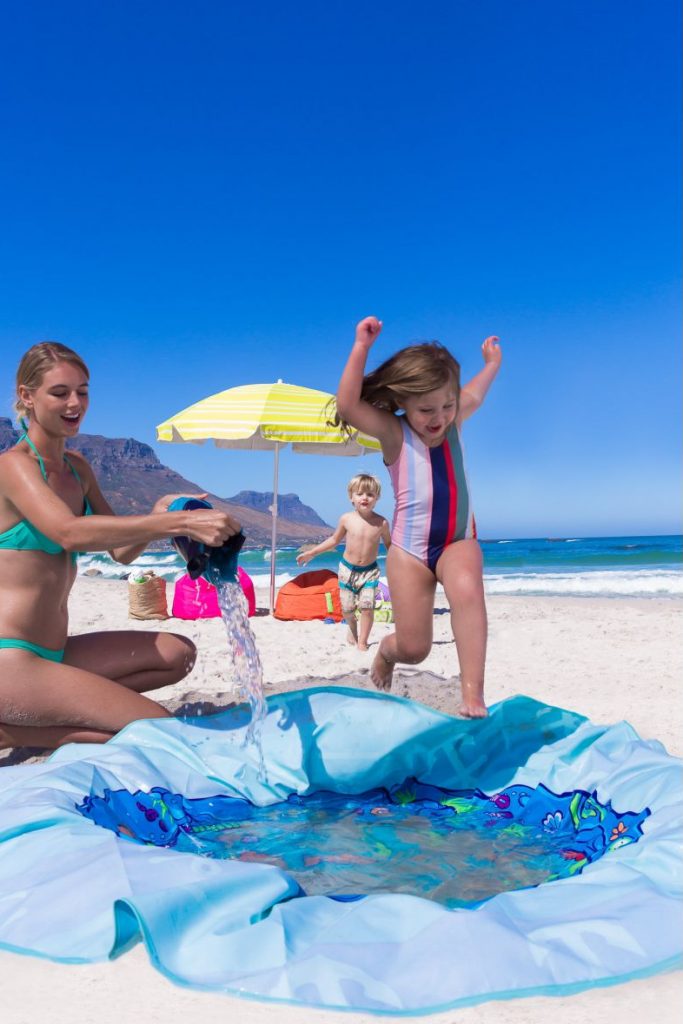
Dimensions: 70.86” by 70.86” by .19”
Weight: 1 pound
Features: Multipurpose item with a portable carrying case that also acts as a bucket
Material: thermoplastic polyurethane (TPU)
When it comes to safely and responsibly designed kiddie pools, EverEarth uses more eco-conscious materials compared to most manufacturers in this space.
This specific pool, which is suitable for children three years and up, is made from thermoplastic polyurethane (TPU), which the brand says is:
- Phthalate-free
- Recyclable
- Has a 20% smaller CO2 footprint compared to traditional PVC.
It makes for great summer fun for younger kids. Plus, the fact that it’s deflatable, foldable, and lightweight means it’s much easier to store and travel with.
4. Costzon Inflatable Water Slide (PVC-free)
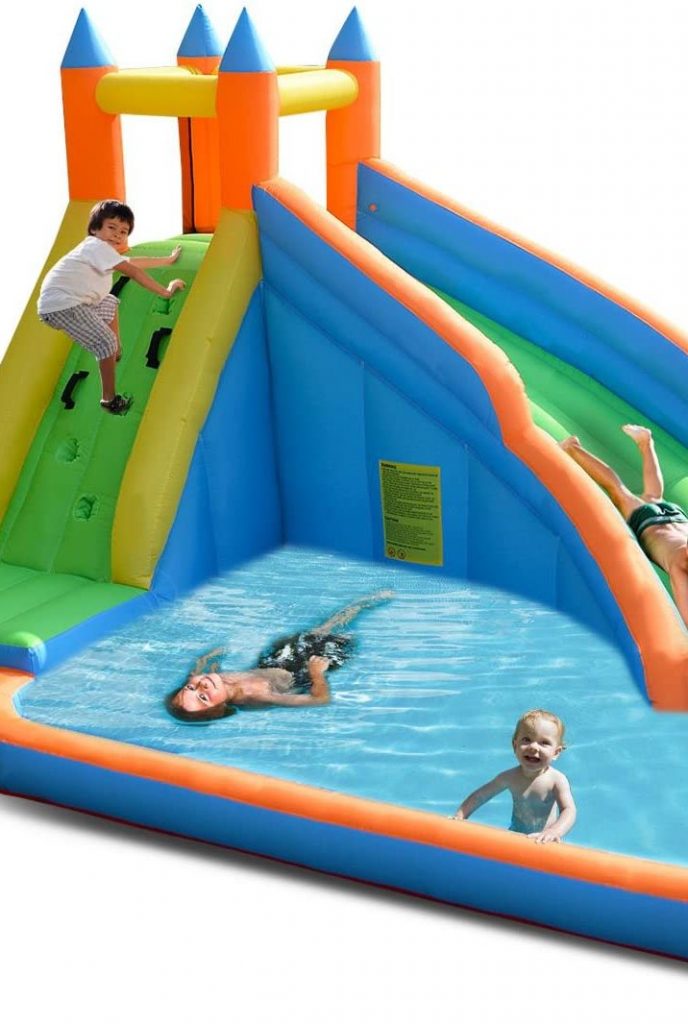
Dimensions: 156 x 118 x 100 inches
Weight: 28.6 pounds
Features: This pool doubles as an inflatable bounce house and can hold up to four children
Materials: PU (polyurethane) and Nylon
As mentioned, it’s very difficult to find a PVC-free inflatable pool, but Costzon carries a collection of inflatable pools that are made from PU and nylon fabric, which are better than PVC. It’s durable and puncture-resistant, too.
You’re sure to become the go-to funhouse of the neighborhood with one of these inflatable pool/bounce houses!
A Few More “Okay” Options for Kiddie Pools
If the pools listed above aren’t cutting it for you, here are a few more options that are less toxic, if not totally non-toxic. These inflatable pools are NOT PVC-free, but they do claim to be made of vinyl that’s free from things like phthalates.
5. Pool Buoy
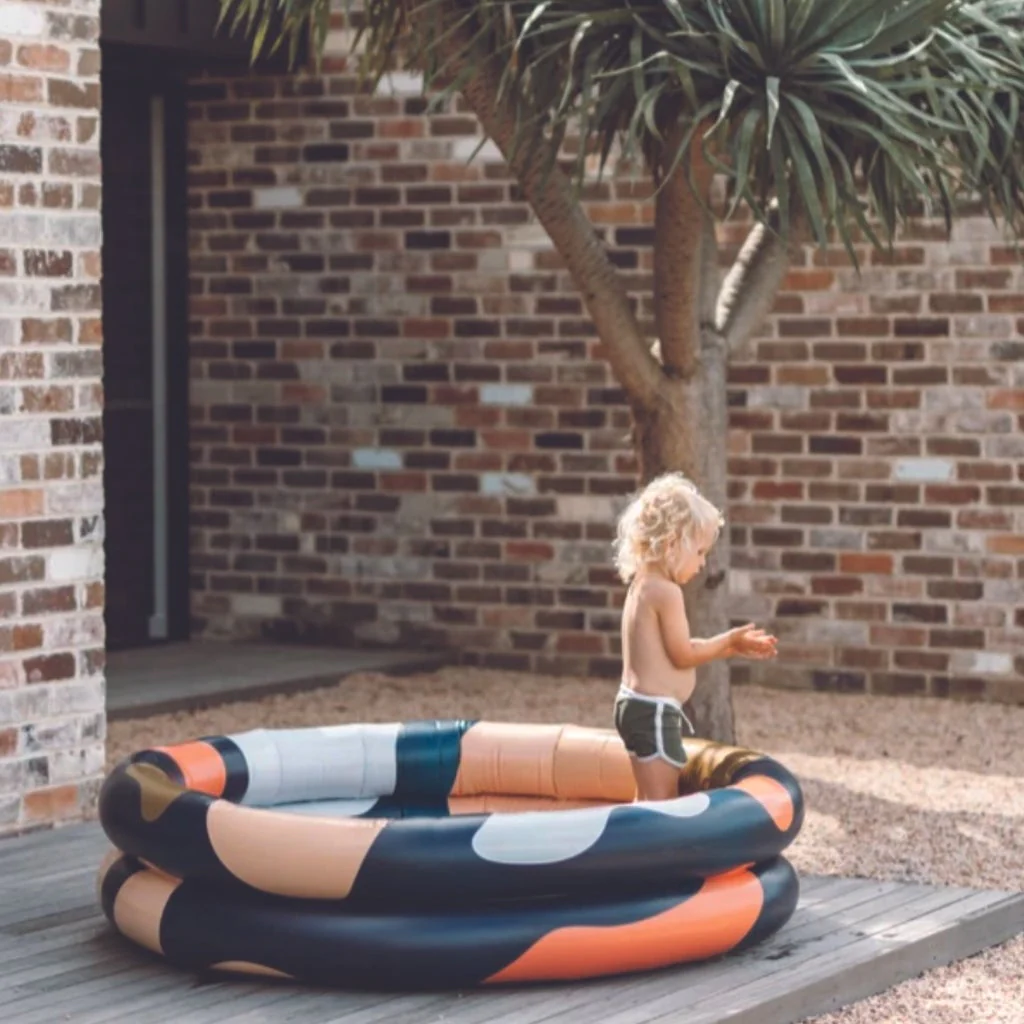
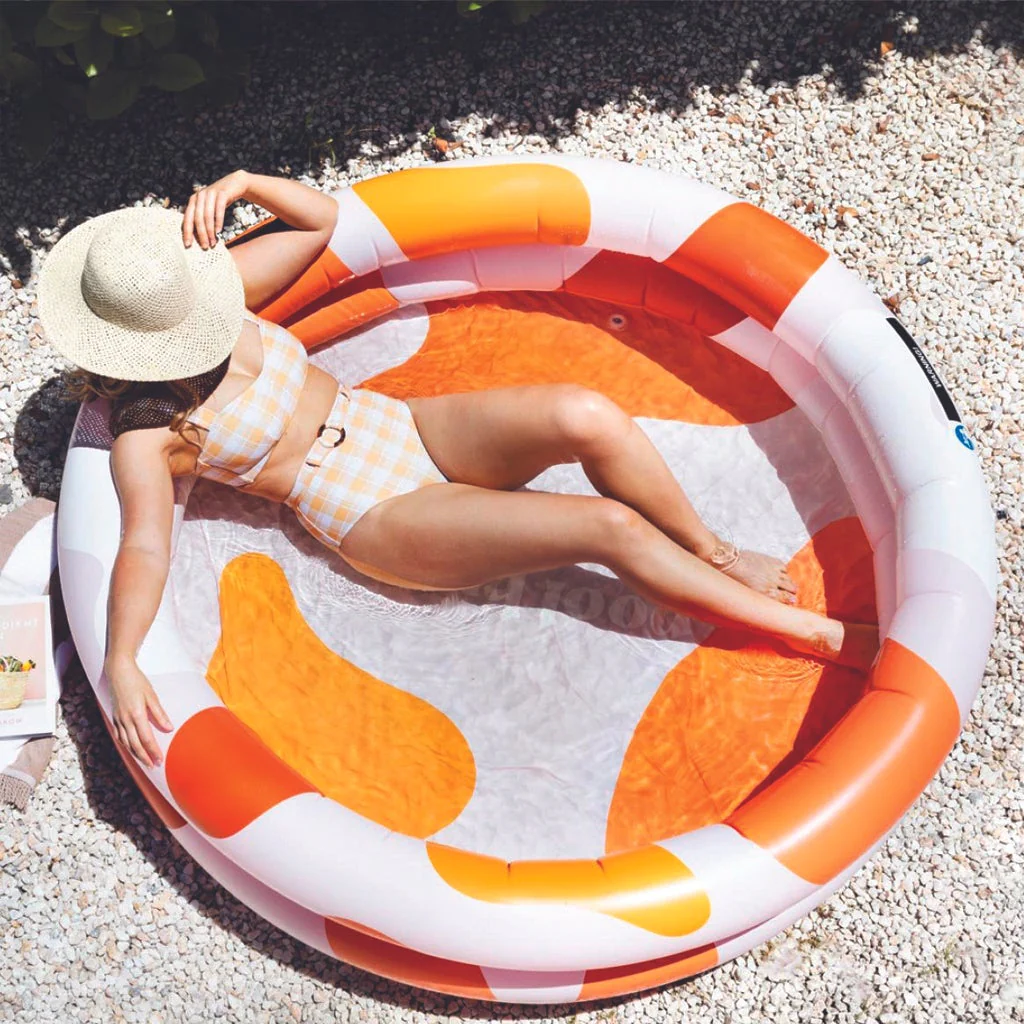
These (very cute) inflatable pools are made from heavyweight, durable, soft-touch PVC. But, they are:
- free from BPA, phthalates, and lead
- tested to be compliant with CPSIA, Prop 65, and the Washington green chemistry list
6. Mylle
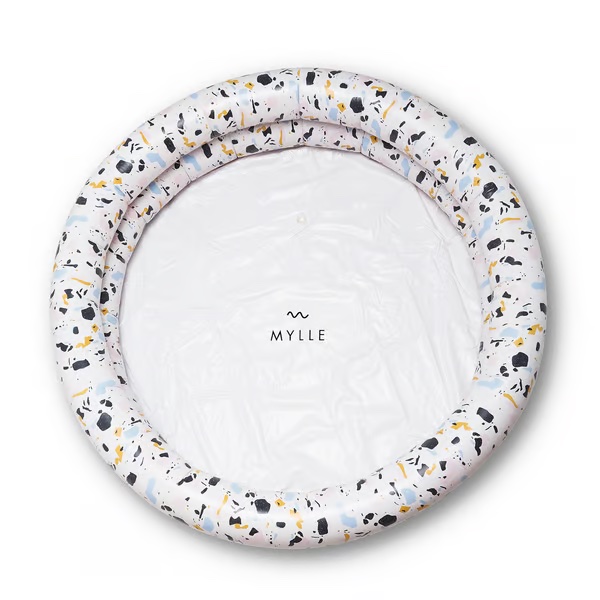
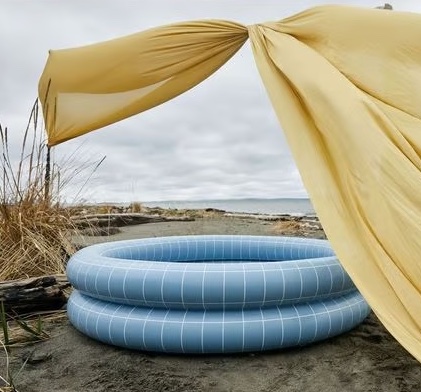
These rooftop-friendly inflatable pools are super cute, that’s for sure. They’re not PVC-free, but they’re made from heavyweight vinyl that is:
- BPA-free
- Phthalate-free
- Lead-free
7. Hello Samah
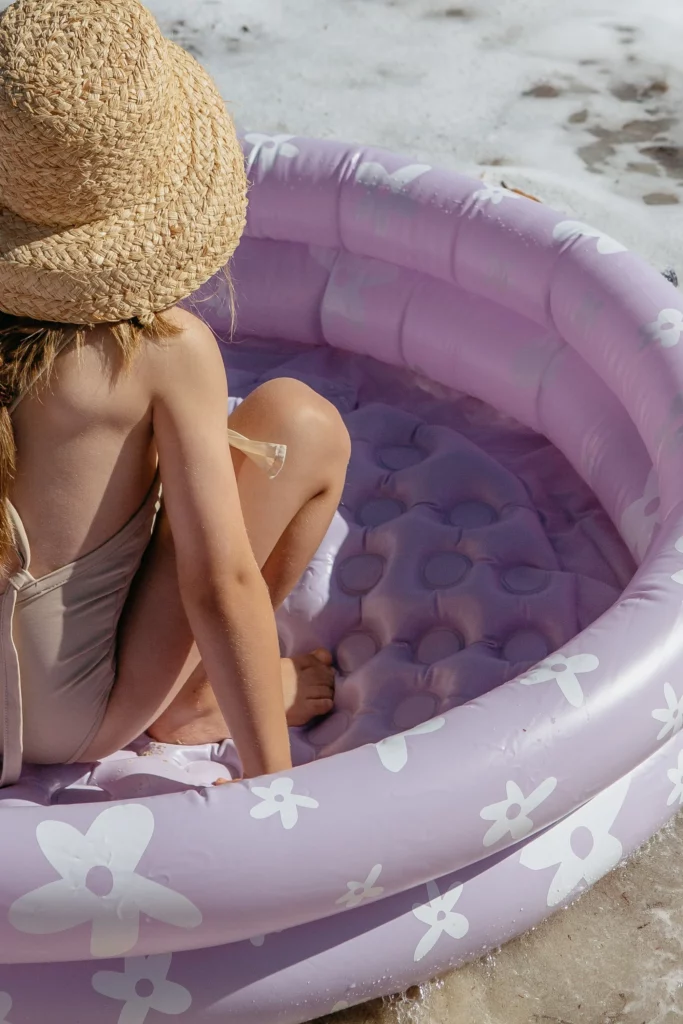
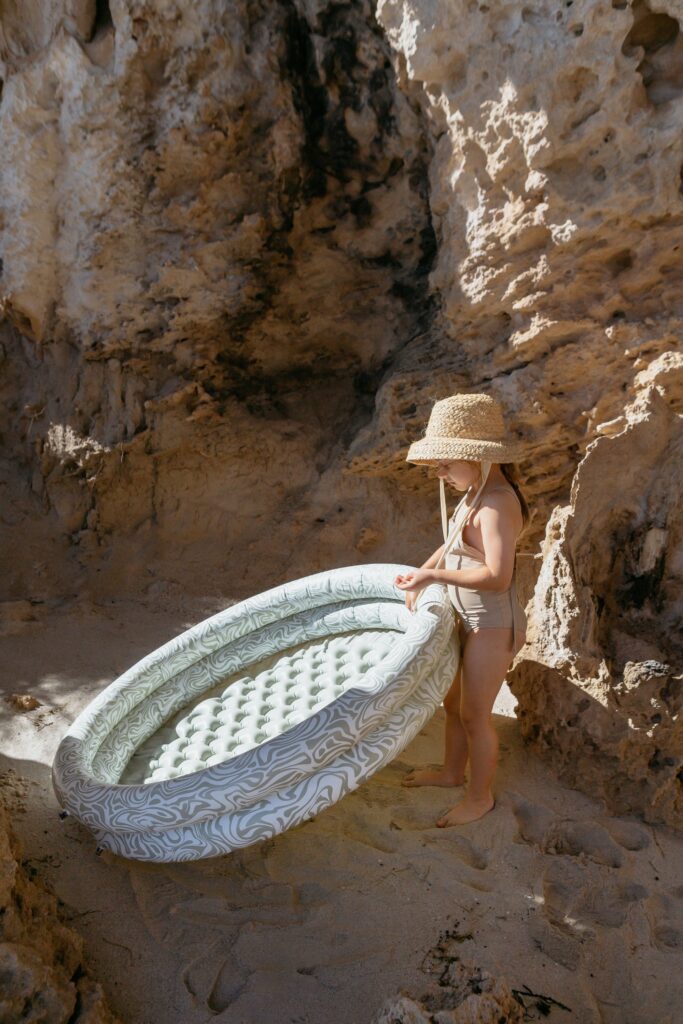
Just like the two brands above, these inflatable kiddie pools are not PVC-free. But they are tested to be free of BPA, phthalates, and lead.
Samah also offers arm floaties and inner tube rings as well.
Are Inflatable PVC Pools Toxic? (hard plastic vs inflatable pools)
Most inflatable pools on the market are made out of PVC, which is the most toxic type of plastic. I’ve listed the only non-PVC inflatable kiddie pools above.
It’s easier to find low-tox wading pools that are made out of hard plastic.
That said, there are definitely pros and cons to each type, so you’ll need to make the best decision for you and your family based on a variety of factors:
Hard Plastic Pools: Pros
- Stable / durable
- Pump free
- Not easily punctured
- Multi-functional (i.e. sandbox)
Inflatable Plastic Pools: Pros
- Portable
- Easy to store
- Softer material
When shopping for the most toxic-free kiddie pools, you might want to have a general understanding of plastic resin codes in order to make an informed buying decision.
Which Plastic Resin Codes Are Considered Safer For Kiddie Pools?
I’ve included more info on the resin codes further down in this article, which can help you as you shop. The short version is that you want to try and avoid #3 (PVC). If possible, you can prioritize your kiddie pool choices as those marked with the following resin codes:
- “2” = high-density polyethylene or “HDPE”
- “4” = low-density polyethylene or “LDPE”
- “5” = polypropylene or “PP”
These are safer choices when it comes to kiddie pools (as well as other plastic items that your children may use).
PVC Plastic Kiddie Pools Aren’t Eco-Friendly Either…
In addition to the effects of PVC on our health, PVC is no friend to our ecosystem. At every stage of life of chlorine-based chemicals like PVC, we see a direct effect on the atmosphere and local water supply. The pollutants discharged in PVC production wreak havoc on the world around us. (For example, the toxic train derailment in East Palestine, Ohio, spilled one of the main components of PVC.)
Tips To Enjoy Your Safe, Non-Toxic Kiddie Pools This Summer
Once you choose a kiddie pool to enjoy in the warm temperatures, what’s next? You probably have a few more questions like…
- How to use it
- How to care for it
- How to store it
I have some final tips to leave with you to ensure you have a safe and healthy kiddie pool experience.
Fill your pool using a “drinking water safe” garden hose.
Making safe choices when it comes to kiddie pools is important, but it is equally important to fill that pool safely. Consider this when it comes to the garden hose you use to fill the pool.
Your little ones (and furry ones) may very well drink some of the water in the pool (accidentally or not), so you want to be sure it is safe to ingest.
Most garden hoses are made with PVC, so at the very least, you want to make sure you buy one that is labeled “lead-free,” “BPA-free,” and “safe for drinking water.”
In my full guide to non-toxic garden hoses I break down what to look for in a garden hose and my recommended brands.
How Long Is It Safe To Leave Water In A Kiddie Pool?
Over time, chemicals can leach out of the plastics and into the water. (Not to mention things like possible bacteria buildup). To be safe, it’s recommended to drain the pool about every 24 hours.
This can be a bit of a dilemma if you don’t want to waste water, so you may not want to make it an everyday activity for your little ones. So here a couple of other ideas for you to reduce waste:
- If you don’t use any toxic chemicals (or accidents) you can use the “waste” water in the garden.
- If your kids are in and out constantly, consider not filling it up all the way.
What Is The Safe Way To Disinfect A Kiddie Pool?
The CDC recommends using bleach to disinfect your kiddie pool, which is not a bad idea if a sick child has an accident in the pool or something like that.
However, bleach is super harsh and can be toxic as well, so if you need to disinfect, I recommend using Force of Nature cleaner instead.
Remember, you only need to disinfect if there are human or pet accidents, bacteria buildup, or you see mold. Otherwise you can simply give it a quick clean!
How Do You Keep a Kiddie Pool Clean Without Chemicals?
Unlike a larger pool, you really shouldn’t need to use harsh chemicals like chlorine to keep bacteria at bay. A basic cleaning can be done with a simple all-purpose cleaner or non-toxic dish soap will work just fine!
Simply squirt some soap into the pool, add a bit of fresh water from the hose, wipe it down with a rag, rise, and dump!
How Do You Store A Plastic Kiddie Pool?
Once you have finished with the kiddie swimming pool for the season, you may decide to transform it into a sandbox for the kids to play in during the cooler months.
But if you are not going to use it, give it a good final cleaning and make sure it is thoroughly dry before storing it in order to prevent mold and mildew. Because the hard plastic pools can take up a lot of space, consider purchasing some large/deep wall hooks for your garage, which can keep it off the floor and out of the way.
The best tip when it comes to finding a non-toxic kiddie pool for your little one is this: you are an amazing parent just for getting informed! Try not to let yourself get overwhelmed. Information is powerful and you looking into these issues to protect your children will help to ensure their wellbeing for years to come. No one is perfect, but making any kind of better choice is worth celebrating.
To get the latest Filtery guides, environmental news, quick tips, and more delivered straight to your inbox each week, sign up for Filtered Fridays!
Related Guide to Low-Tox Summer Fun:

